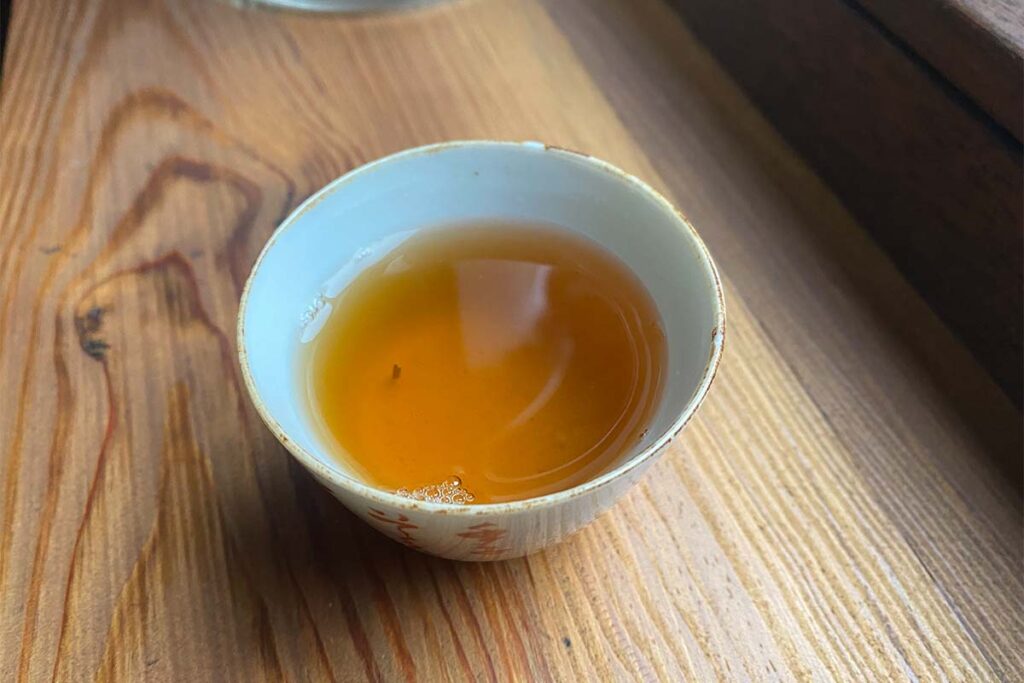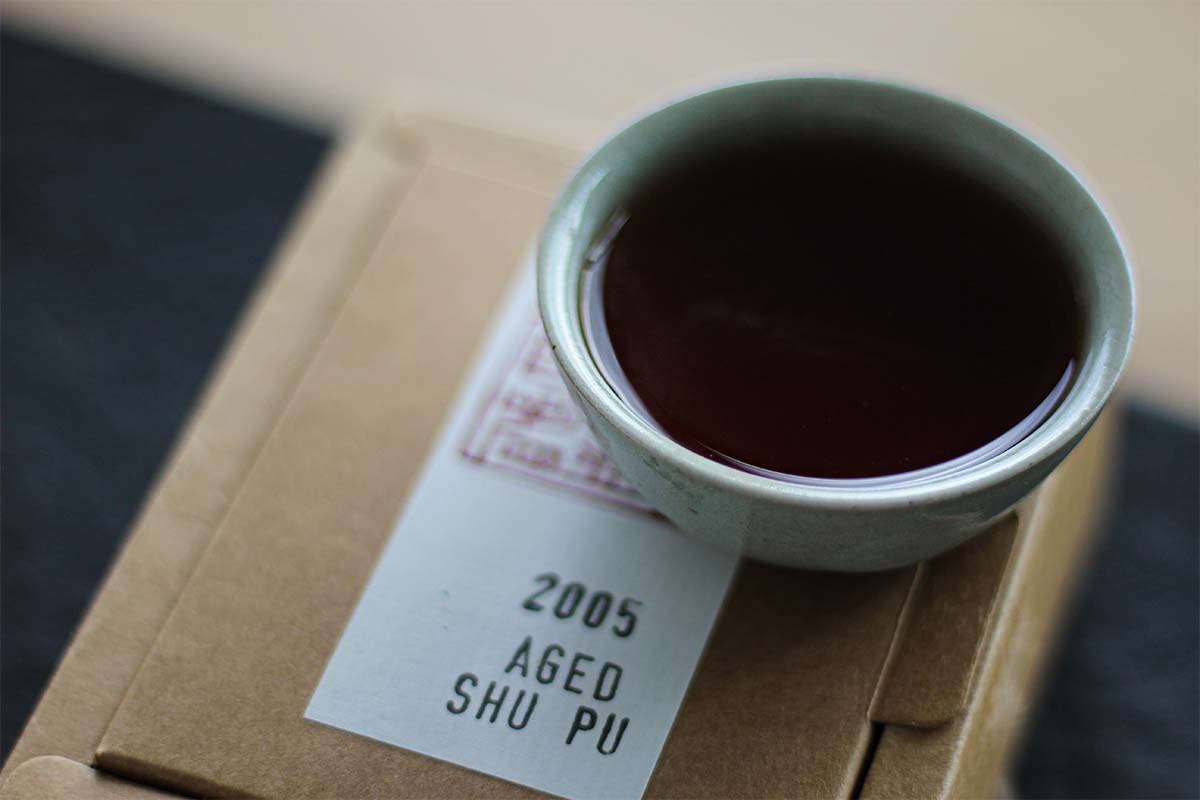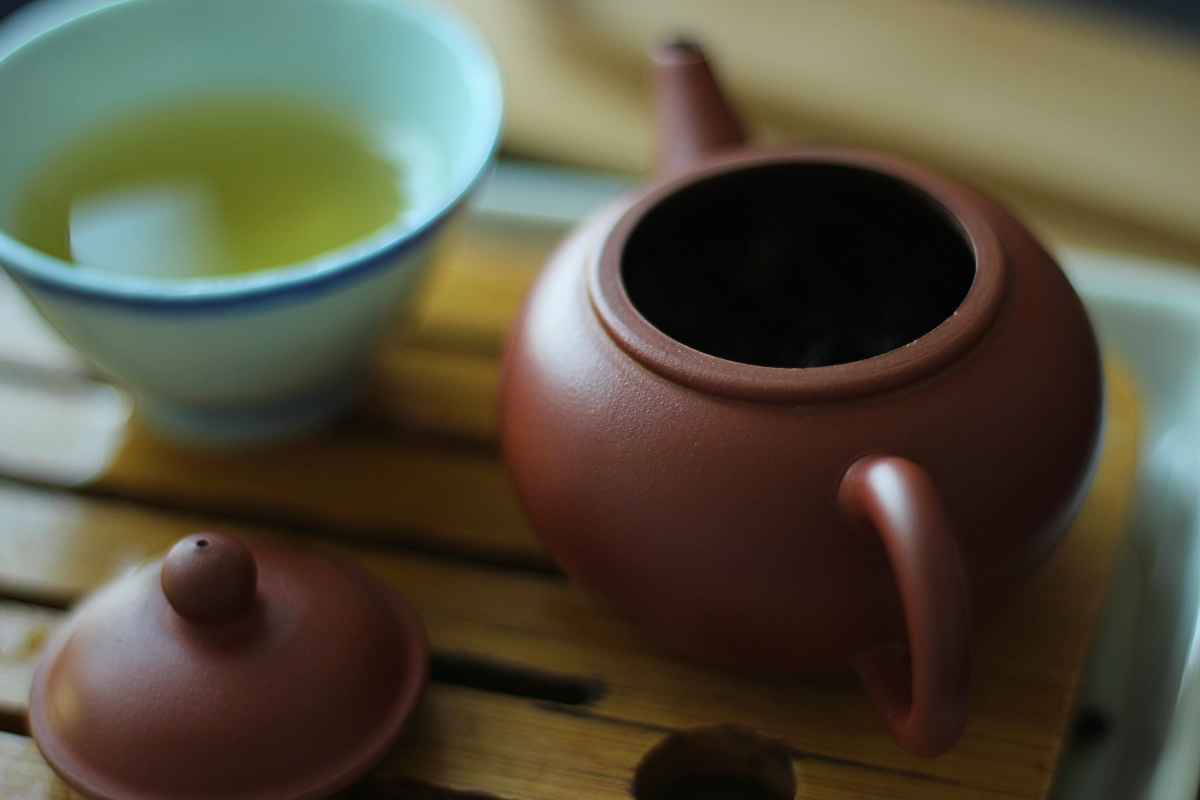Puerh tea is getting more popular and more people want to know what all the fuss is about. Buying puerh tea is one thing, but storing it properly is a whole other story. Puerh tea slowly ferments over time so proper storage is important to make sure your tea ages well. This article offers a complete overview of how to store puerh tea; both for short-term and long-term puerh storage.
Puerh tea is best stored in relatively hot (between 68°F and 86°F or 20°C – 30°C) and humid (55 – 75% relative humidity) conditions to make sure the microorganisms that are responsible for the aging process in the tea leaves stay active. There should also be enough airflow because the microorganisms need oxygen to breathe and to stay active.
What is puerh tea?
Pu-erh tea is a type of fermented type tea that originated in Yunnan province in China and is made from a variety of the Camellia Sinensis plant. The two main subtypes of puerh tea are raw (sheng) puerh tea and ripe (shu) puerh tea. Raw puerh tea is further divided into young raw puerh and aged raw puerh.


It’s important to know that all puerh tea should go through any form of microbial fermentation. This implies that this type of tea does not lose its flavors, but develops into something completely different over time, especially sheng pu-erh.
Young sheng puerh is an exception because there hasn’t been any fermentation yet. Sheng puerh slowly ferments over time, while shu puerh is artificially fermented during production.
In theory, young sheng puerh is similar to green tea, but it’s still classified as puerh tea for simplicity’s sake.

Don’t know where to buy tea online? I made a list of over 300 online tea shops and I keep updating it regularly. You can check it over here
Puerh tea leaves are usually compressed into cakes or bricks for storage. These compressed cakes and bricks are called “tea cakes” and “tea bricks”. Tea cakes can be aged for decades or even centuries, which creates an increasingly complex flavor profile as time goes on.
What are the best ways to store puerh tea?
Puerh tea is one of the most valuable and sought-after teas in the world because it develops into something magical under the right conditions. That’s why it’s important to know how to store puerh tea and what you need to keep in mind.
There are two things that you will need to consider before deciding on a storage method: the climate where you live, and how long you want to store your puerh tea.
General tea storage
When you’re storing puerh tea you plan on drinking in the near future, storage conditions aren’t that important. However, the basics of tea storage should be kept in mind, even when you’re only storing it for a short time.
It’s always best to store any tea away from direct (sun)light and in an odor-free environment. Tea leaves are sensitive to light and will easily pick up smells of other things. Storing puerh tea in a kitchen cupboard is a bad idea because this will negatively affect your tea.
The smell of food, spices, and other elements that are frequently used in a kitchen will seep into your precious tea leaves and will probably ruin them forever.
Short-term puerh storage
If you bought a cake of puerh tea and you plan on drinking it fairly quickly, it’s a good idea to break up the cake (or brick) and store the leaves in a jar. This allows the leaves to breathe and air out, which improve the overall tea brewing experience.
If you don’t have a jar or you don’t want to break a whole cake/brick at once, you can just chip off some pieces every time you want to brew yourself a nice cup of tea.
However, breaking a whole puerh cake at once has some benefits. One major benefit is that you can take your time to do it. It’s a mindful practice in which you need to focus to damage the leaves as little as possible. If you’re not being careful, you can easily break tea leaves, which is never what you want.
Whole and unbroken leaves brew a better cup of tea and that is why taking your time to break a tea cake is beneficial in the long run. If you do it all at once, you’re less in a hurry and are probably more careful to not damage the tea leaves.
Only chipping off the leaves you need for one session doesn’t have to be an issue, but it’s not what everyone is willing to do. Doing it this way means you have to focus every time you want a cup of puerh tea.
Long-term puerh storage
Puerh storage is a hot topic because of the inherent qualities of this type of tea. Puerh tea changes and continues to ferment over time so it’s almost like a bottle of good wine; it only gets better (when stored in the right conditions).
If you’re someone who bought a puerh cake and you want to store it for your future self, or if you’re an investor and want to sell it for a big profit in the future, it’s important that you know how to store it properly. Improper storage can ruin your tea (and/or investment) so it doesn’t really matter what your goals are with puerh tea. If you’re storing it long-term, you should know how to do it.
Long-term puerh storage is more complicated than short-term storage because there are several factors you need to keep in mind. The things that are important for long-term puerh storage are temperature, humidity, and airflow.
Puerh tea has been stored Southeast Asia for decades and popular locations are China, Taiwan, Hong Kong, Malaysia, and Macau. The climate in these areas is suitable for long-term puerh storage because of ideal temperature and humidity.
Temperature for long-term puerh storage
The temperature for long-term puerh storage is more important than temperatures for short-term storage. Puerh tea should be stored between 68°F and 86°F (20°C – 30°C). You could say that puerh tea likes the same temperatures as humans.
It’s important to find a balance because temperatures that are too hot will speed up fermentation too much, while cold temperatures will slow down the fermentation process. The right balance can be difficult to achieve in the west, but the areas mentioned above have proved to be excellent places to age puerh long-term.
There is a difference between wet storage and dry storage for puerh tea, but that will take things too far so I won’t discuss them in this article.
Humidity for long-term puerh storage
Together with temperature, humidity is one of the most important factors for long-term puerh storage.
Ideally, humidity for puerh should be between 55% and 75%. This is not a single value as humidity and temperature go hand in hand. Slightly higher temperatures require lower humidity, while cooler temperatures work better with slightly higher humidity.
Airflow and long-term puerh storage
Airflow is a final important element to keep in mind when storing puerh for several years/decades. Most teas (like oolong and white tea) age well when storing them in airtight containers, but this is not the case for puerh tea. The fungi, microbes, and bacteria in puerh tea need oxygen to breathe and stay active.
In order to mature and ferment over time, puerh tea needs some oxygen. It’s difficult to say how much or how often you need to air out your cakes, but it’s important that they get fresh air.
Just like with temperature and humidity, the key is to find the right balance. Too much fresh air and overventilation cause weak and thin puerh tea liquor, while too little oxygen stops fermentation altogether.
A general guideline for countries in Southeast Asia is to ventilate puerh tea in normal room conditions where you open the window from time to time. Just like with temperature, puerh tea likes the same conditions as humans.
Humans don’t like too much fresh air, while no fresh air is no fun either. Opening a window from time to time feels good to us, so it also works well for puerh tea (in areas such as Hong Kong and Macau).
Conclusion & tips for storing your own puerh tea
If your only storing one (or a couple of) cake(s) for yourself, it’s probably best to store them in your own home. If you’re an investor and looking to make some money by selling aged puerh tea in the future, you’ll have the best chance of succeeding by storing your tea in a traditional location such as Hong Kong or Taiwan.
There hasn’t been much evidence that storing puerh tea in the west results in well aged puerh. It’s possible that this is the case, but no one knows this for sure (yet).
If you only have a small amount of puerh to store for yourself, I recommend storing it in a dark place where you can keep track of temperature, humidity, and where there is decent airflow. If you do it this way, the tea can turn out pretty well. Keep in mind that it’s not an exact science and the best results of aging puerh tea are traditionally seen in Southeast Asia.




